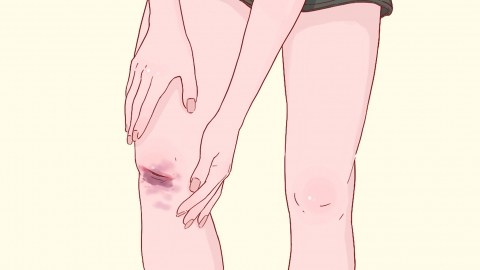What causes a raised hard lump after wound healing?
Generally, a raised hard lump after wound healing may be caused by normal scar hyperplasia, localized hematoma organization, residual inflammation or infection, foreign body retention, or secondary infection of sebaceous cysts. If discomfort occurs, it is recommended to seek timely medical evaluation and treatment at a正规 hospital. The specific causes are analyzed as follows:

1. Normal Scar Hyperplasia
During the wound healing process, excessive proliferation of fibroblasts produces large amounts of collagen fibers, forming scar tissue that appears as a raised hard lump, often accompanied by mild itching. Avoid scratching the scar. Applying silicone gel or topical creams such as mucopolysaccharide polysulfate can help soften the scar. Cold compresses may also relieve itching. Daily sun protection is important to reduce pigmentation.
2. Localized Hematoma Organization
When bleeding from the wound is not fully absorbed, clotted blood gradually organizes into a firm mass, which may cause slight pain upon pressure. Local warm compresses can improve blood circulation and accelerate absorption of the mass—apply for 15–20 minutes per session, 2–3 times daily. Avoid pressing forcefully on the lump to prevent damage to surrounding tissues.
3. Residual Inflammation or Infection
If the wound was previously infected and inflammation has not completely resolved, local tissue fibrosis may form a hard lump, possibly accompanied by redness, swelling, and tenderness. Under medical guidance, antibiotics such as cefuroxime axetil tablets, roxithromycin capsules, or metronidazole tablets may be prescribed. The area should be disinfected with iodophor, kept clean and dry, and protected from re-infection.
4. Foreign Body Retention
Foreign bodies such as dust or suture material left in the wound may become encapsulated by the body, forming a hard lump, possibly with recurrent redness, swelling, and pain. Medical intervention is required to surgically remove the foreign body. After surgery, follow doctor’s instructions to apply mupirocin ointment to prevent infection, change dressings regularly, promote wound healing, and avoid squeezing the lump manually.
5. Secondary Infection of Sebaceous Cyst
A blocked sebaceous gland duct near the wound may form a cyst. After wound healing, the cyst may become inflamed due to irritation, presenting as a raised hard lump, possibly with pain or pus formation. Under medical supervision, antibiotics such as amoxicillin-clavulanate potassium, levofloxacin, or cefixime dispersible tablets may be used. Once inflammation is controlled, surgical excision of the sebaceous cyst is recommended. Postoperatively, keep the area clean and avoid contact with water.
In daily life, proper wound care is essential to prevent foreign body retention; avoid scratching after healing to minimize scar formation; seek medical attention promptly if the lump becomes red, swollen, or painful; maintain a light diet and consume foods rich in vitamins to support tissue repair.




